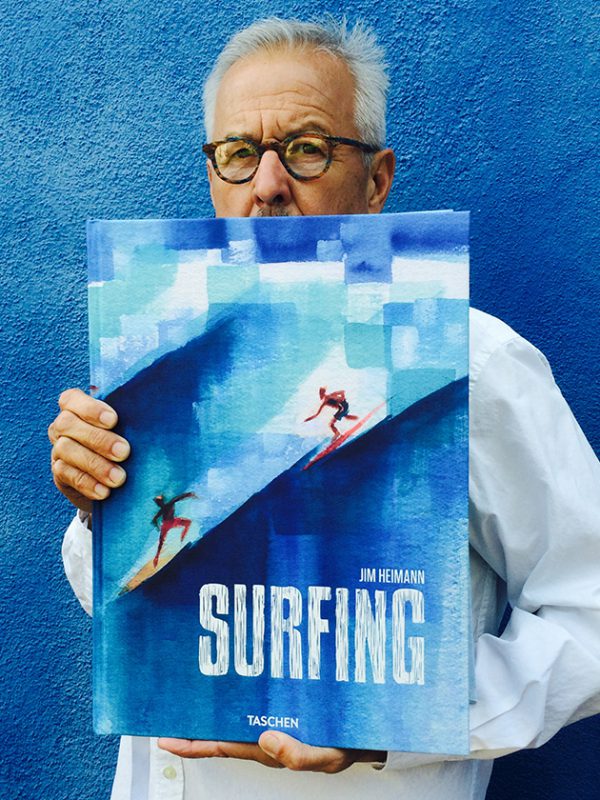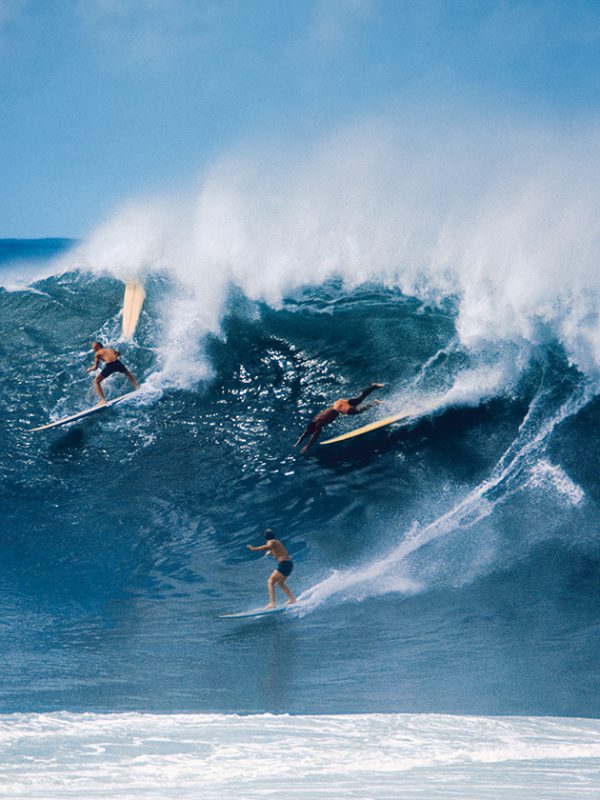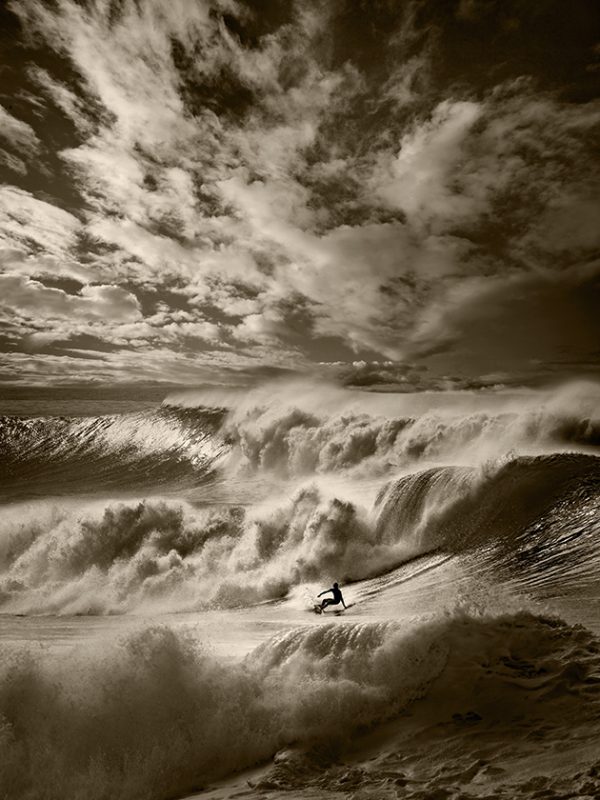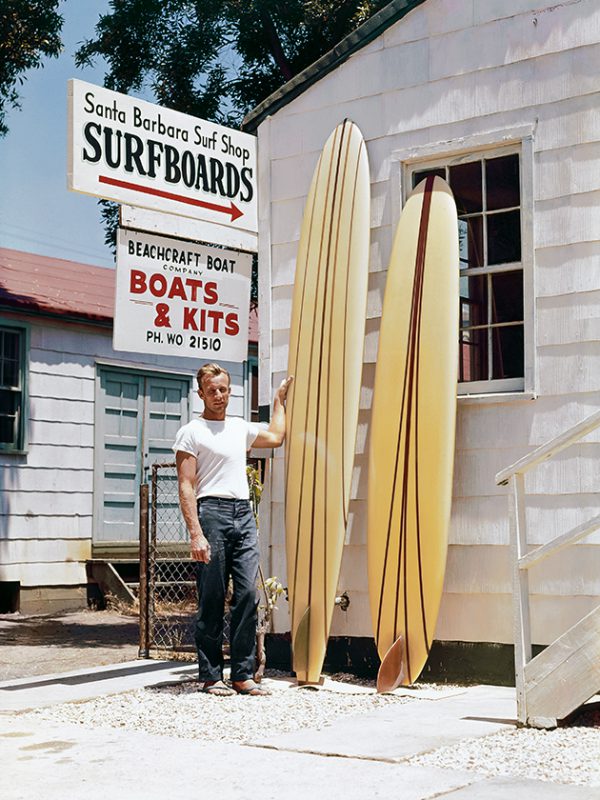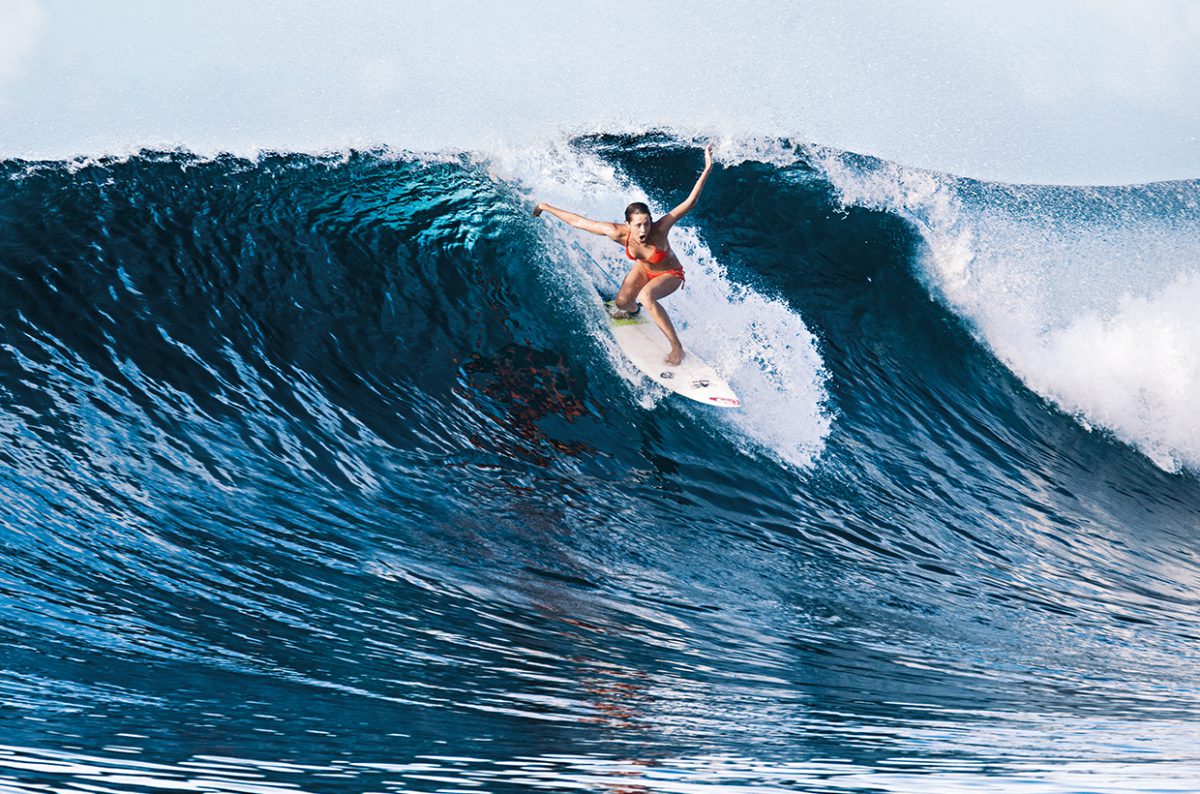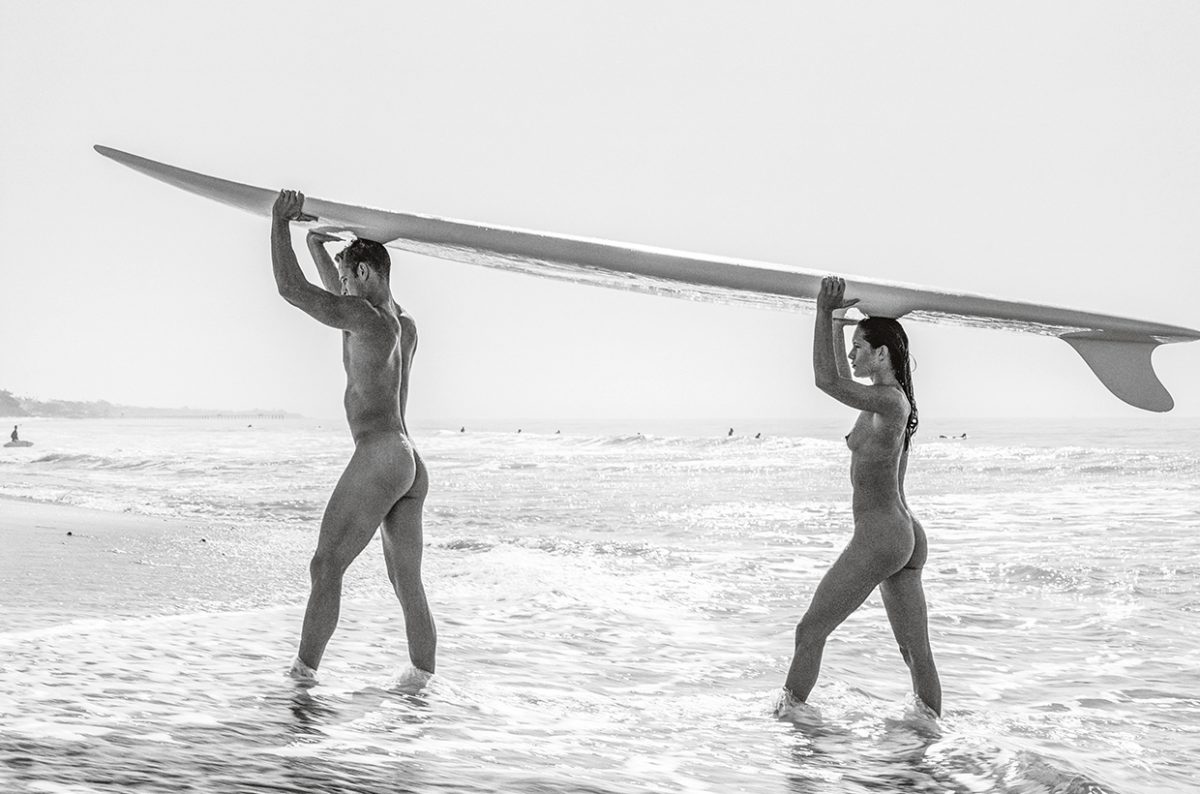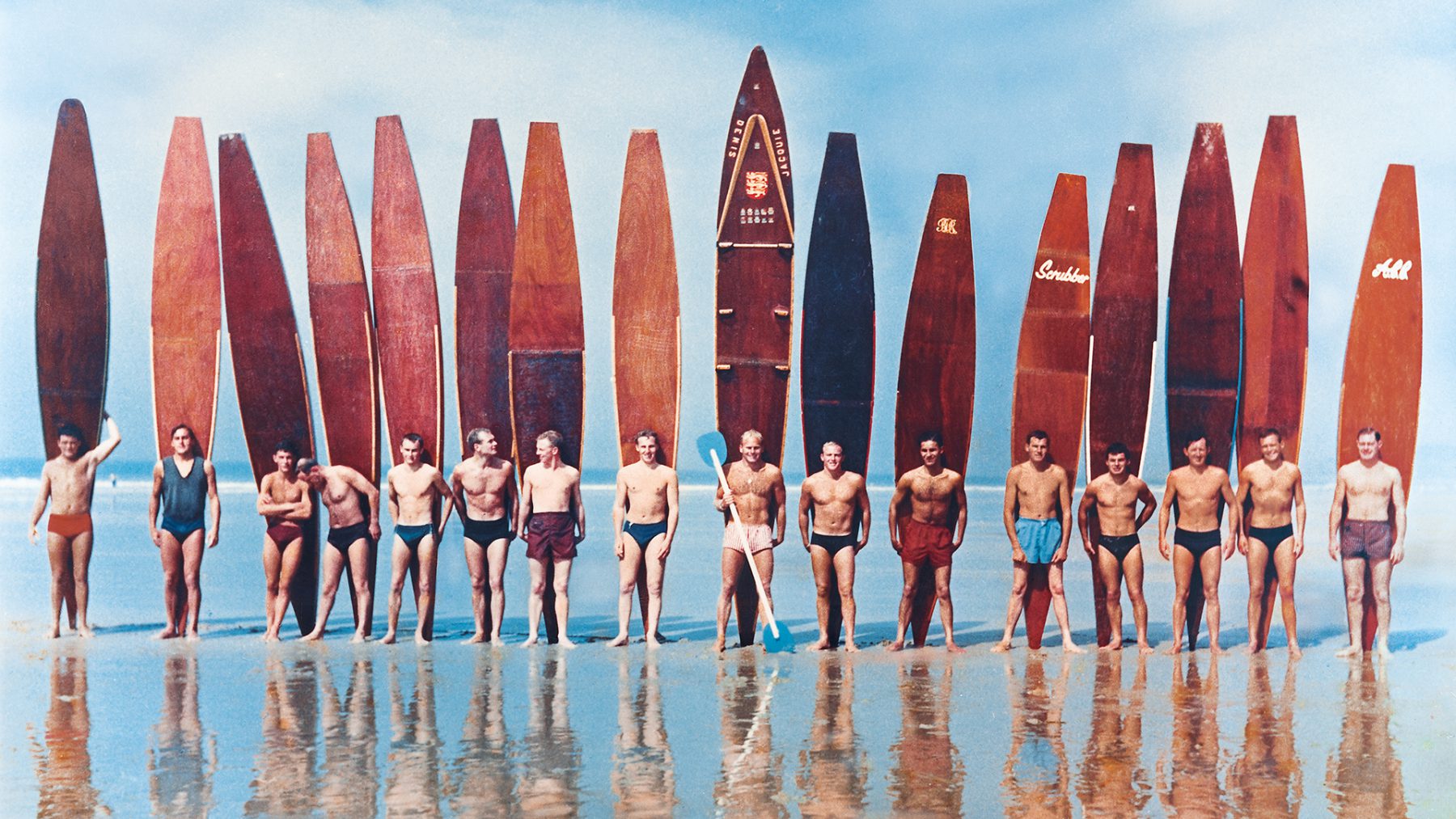Riding High by Ralf Götze | 7th June, 2019 | Personalities
Becoming one with the waves and the ocean is both thrilling and serene. The endless wait for that one perfect wave in exchange for a few unforgettable minutes or even seconds that real riders even risk their lives for. Surfing – a sport, a way of life and a passion for those who know they will never experience the same thing twice.
It is 6:30 a.m., and the sun has not yet risen. I sheathe myself in a neoprene wetsuit, grab my surfboard and paddle out into the sea. I’m the first person out on the water today, and I’m all alone, but that won’t last long: Everyone wants to be first. A shark fin or two has already appeared on the surface of the water – it is the ocean, after all. And several hundred meters from the shoreline, the perfect wave is already breaking. The sun starts to rise, the morning mist dissipates. By now, I’ve surfed dozens of good waves. My “work” is through, well before any office worker has even arrived at their desk. That’s the surf spirit, and it’s far easier to convey through pictures than through words, which is what makes the 900 images in Taschen’s 2017 coffee table book Surfing: 1778–Today so compelling.
The El Hierro surf spot on Fuerteventura, one of the Canaries Islands, is my adopted home. Since I arrived here to stay after my first surfing expedition back in the winter of 1992, I’ve somehow become the “grumpy old local.” So what brought me here in the first place? At some point, the cold weather in my home country, Germany, had started getting to me – plus, I just missed the waves too much. So I moved to the island, and upon arrival, headed right for the beach in an old VW van. Since then, I’ve been living at the foot of a volcano, just ten minutes from my favorite beach in the world. In the best circumstances, a successful morning on the water goes something like this: You paddle around, watching as the waves move toward you. Eventually one comes, then breaks: the perfect wave, as though it were made just for you. You paddle into it and it picks you up, eager to toss you over, to throw you off balance. But you can overcome nature in these moments. Gracefully, you rise from the water, lifting yourself up onto your surfboard. Staying low, keeping in mind that the wave is much bigger than you are. You glide down a misty slope, pulling off a bottom turn to reach the glass wall for a wild ride on the surging water.
Complete devotion to this one activity that brings you closer to the earth’s natural rhythms.
When I first got hooked on the sport more than 25 years ago, I had to explain to Germans that surfing is not the same as windsurfing. The German word for surfing is Wellenreiten – “wave riding” – which I always found to be a fitting description. Surfing gave way to distinct pursuits like skateboarding or snowboarding, but even within surf culture, there are different approaches: short boards versus long ones, standing up versus lying belly-down on the board (that is, bodyboarding), and recently, standup paddleboards (SUPs) are showing up in increasing numbers at surf spots. There are also surf kayaks, waveskis, and foilboards. With all of these possibilities, it can get crowded out there on the water – which has led to some rivalries. Surfers and windsurfers never had serious problems with each other, though: Since both depend on different weather conditions, they rarely overlap. The waves both rely on are created several days in advance, thousands of kilometers off the coast. When the waves hit the beach or the reef, the lower part overtakes the upper part, and the wave breaks. If the wave is just about to break, it’s called a green wave; if it’s already broken, it’s referred to as white water.
As soon as you catch a green wave for the very
first time, you’re hooked.
The surfer’s goal, of course, is the lateral ride along the unbroken wave – always just before the point at which it rolls over. Windsurfers, as the name suggests, thrive on wind, but for surfers, wind is only desirable when it blows gently from land out into the sea.It is only with this offshore wind – a term that brings joy to any surfing enthusiast – that the perfect wave can be formed, complete with a tube or barrel: the tunnel that is formed as the wave breaks, and through which the surfer moves. This is also known as a “green room” or a “crystal cathedral.” The moments inside the barrel are nothing short of magical.
But even apart from that, surfing is an activity unlike any other, completely distinct from skateboarding, snowboarding, rafting, sailing, windsurfing and kitesurfing. What makes surfing special is the propulsion caused by the orbital motion of the water. Sounds complicated – and it is. To simplify things: When you snowboard down a slope, gravity pulls you down. With surfing, however, the wave releases its energy directly into the surfboard and serves as the force that keeps you moving. It’s not easy to work a wave: You maneuver your board up, down, left, right, forward, backward, always moving three-dimensionally in space. Anyone who has ever caught an unbroken green wave is instantly hooked on the sport: Once you’ve chased one down, you just want to experience it again and again. The power of nature, the life force of each individual wave. How it breaks, how steep it is, how fast it moves. One-of-a-kind waves are unforgettable.
I still remember my first green wave from more than 25 years ago, while I was surfing on the French Atlantic coast. It was so awe-inspiring that I ended up investing a tremendous amount of time, energy and money just to experience something like it again, seeking out some of the best waves in the world – in Bali, Hawaii, Australia and Morocco – during a two-month break from work.
Be patient and it will come. The perfect wave – just for you.
The highest wave I ever conquered was six meters high, at the worldclass surf spot of Anchor Point in Morocco. My longest wave – absurdly long, in fact, was at Imsouane, also in Morocco, where the ride on my longboard lasted more than three minutes. Such waves exist in just a few places in the world and only under very special conditions. Fantastic waves are epic, magical. The phenomenon of complete happiness through great wave conditions and the high through the total adrenaline rush is referred to as a stoke. But even that doesn’t really capture it. Stoke is the surfer’s attitude to life: complete devotion to this one activity that brings you closer to the earth’s natural rhythms. But there’s also an element of risk, and while surfing in itself isn’t a dangerous activity, there are moments where nature can conspire against you, and even with caution and experience, I’ve had near-death experiences where the waves pushed me underwater and kept me down. Sometimes you feel like a tiny being lost in the vast ocean. In cases like this, it’s important to stay calm, as difficult as that may be in the moment – if you don’t, you might not come up for air.
